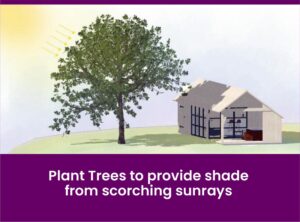Consider both the aesthetic and practical benefits while creating your landscaping. Planting trees, shrubs, and other plants can help your home become more energy efficient. Windbreaks and shade can keep your home cooler in the summer and warmer in the winter.
Consider the sun’s path, wind patterns, and the natural elements of your site while designing an energy-efficient landscape. Working with a professional landscaper can assist you in creating a stunning and functional design.
You can also save resources through landscaping. Choose drought-tolerant plants and consider creating a rain garden to collect and filter rainwater. These methods can help you save water while also protecting local waterways.
Finally, your landscape design should not only look wonderful, but it should also benefit you and the environment. You can build an energy-efficient and environmentally friendly outdoor space by employing the correct techniques and collaborating with a professional.
Here are some energy-saving landscaping ideas:
Plant trees strategically: Plant trees strategically to improve the energy efficiency of your home. Trees give shade and wind protection, allowing your home to be cooler in the summer and warmer in the winter.
Plant deciduous trees on the south and west sides of your house for the best results. These trees will give shade in the summer and allow sunlight to enter the house in the cold or harmattan season. Plant evergreen trees on the north and northwest sides of your house to block chilly winds and keep your home warm.
Strategic tree planting can lower energy expenses while also creating a more comfortable living environment. Other advantages of trees include improved air quality and less noise pollution.

Hardscaping features such as walls, fences, and berms can assist block wind and produce microclimates that can help you to keep your home at a comfortable temperature.
Water features, such as ponds and fountains, can help cool the air surrounding your home while also providing a source of humidity, which is good in dry regions and can help you create a more comfortable and enjoyable outdoor setting that benefits both you and the environment.

Select appropriate plants: Select plants that are well-suited to your climate and soil conditions. Native plants are frequently a good choice because they are adapted to their surroundings and require less water and maintenance.
You may assist minimize your energy use and save money on your power costs by adopting these landscaping ideas. A well-designed landscape can also increase the value of your property and improve your outdoor living experience.
For more information on energy-efficient landscaping, visit www.estatemastersgh.com or call 0543884700.
